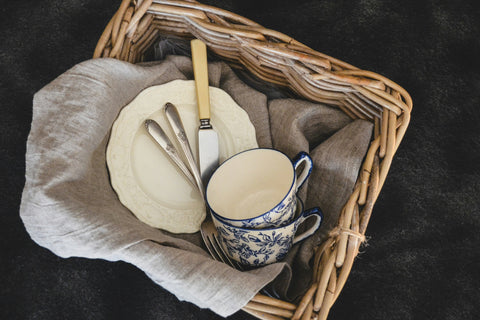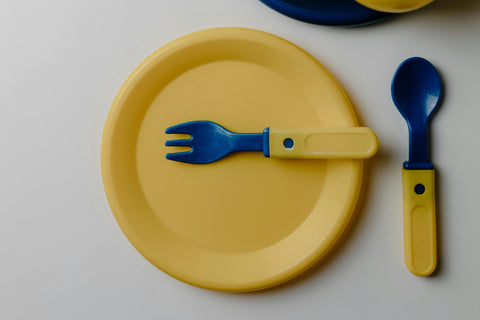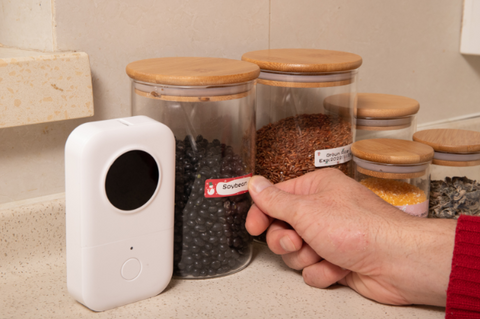Stickers on dishes can leave stubborn residue, making them challenging to clean. However, with the right techniques, you can effortlessly remove sticker residue from various dish materials like ceramics, glass, plastic, wood, and more. In this guide, we'll explore effective methods tailored to different materials, compare glue stickers, and delve into the advantages of using a thermal label maker for household organization.
Remove Sticker Residue from Different Dish Materials
Ceramic Dishes
Method: Soak the ceramic dish in warm, soapy water for several minutes to loosen the adhesive. Then, gently scrub the residue with a soft sponge or cloth. For stubborn residue, apply a paste of baking soda and water, let it sit for a few minutes, then scrub and rinse thoroughly.
Tip: Avoid abrasive cleaners or tools that may scratch the ceramic surface.

Glassware
Method: Similar to ceramics, soak glass dishes in warm, soapy water. Use a plastic scraper or the edge of a credit card to gently scrape off the residue. For persistent residue, apply a mixture of equal parts vinegar and water, let it sit for a few minutes, then scrub and rinse.
Tip: Exercise caution to prevent breakage, especially with delicate glassware.

Plastic Utensils
Method: Begin by scraping off as much residue as possible with a plastic scraper or your fingernail. Apply a small amount of cooking oil or rubbing alcohol to a cloth and gently rub the residue until it lifts off. Wash the container with dish soap and warm water to remove any remaining oil or alcohol.
Tip: Test the oil or alcohol on a small, inconspicuous area first to ensure it doesn't damage the plastic.

Wooden Utensils
Method: Use a mixture of equal parts vinegar and water to dampen a cloth. Gently rub the sticker residue until it loosens. If needed, sprinkle baking soda on the damp cloth to add abrasiveness. Once the residue is removed, wipe the wooden utensil with a clean, damp cloth and allow it to air dry.
Tip: Avoid soaking wooden utensils or using harsh chemicals, as they can damage the wood.

Stainless Steel Tableware
Method: Begin by applying a small amount of cooking oil or WD-40 directly onto the sticker residue. Let it sit for a few minutes to penetrate the adhesive. Then, use a soft cloth to gently rub the residue in a circular motion until it loosens and lifts off. For stubborn residue, create a paste using baking soda and water, apply it to the affected area, and let it sit for a few minutes before scrubbing gently. Finally, wash the stainless steel tableware with warm, soapy water to remove any remaining residue and oil.
Tip: Avoid using abrasive scrubbers or cleaners, as they can scratch the surface of stainless steel. Additionally, always rinse and dry the tableware thoroughly to prevent water spots and maintain its luster.

Comparison of Stickers And Thermal Labels
Glue Stickers: Common glue stickers often leave behind sticky residue that can be difficult to remove. They may require scraping or the use of chemical solvents, which can potentially damage the dish surface.
Thermal Labels: Thermal label, commonly produced by the thermal label maker, offer a more convenient and residue-free labeling solution. These thermal labels utilize heat-sensitive paper that adheres to surfaces without leaving sticky residue. As a result, thermal stickers are ideal for labeling dishes and containers in the kitchen, offering easy removal and reapplication as needed.

Advantages of Thermal Label Maker for Household Organization
Versatility:Thermal label maker enables quick and hassle-free labeling of dishes, containers, and pantry items. With simple software interfaces, users can create customized thermal labels with text, images, and barcodes to streamline kitchen organization.
Time-Saving: With thermal label printers, users can quickly generate customized labels to suit their specific organizational needs. This saves time compared to handwritten labels or traditional adhesive stickers, allowing for more efficient kitchen management and inventory tracking.
Residue-Free Removal: Unlike glue stickers, thermal stickers can be easily removed without leaving behind sticky residue. This feature allows for efficient relabeling and rearranging of items without the need for intensive cleaning or scraping.
Longevity: Thermal labels are designed to withstand various environmental conditions, including temperature fluctuations and moisture exposure. As a result, labels applied to stainless steel tableware remain legible and intact over time, ensuring lasting organization and clarity in the kitchen.

Conclusion
Removing sticker residue from dishes is a simple task with the right techniques tailored to different materials. By following the methods outlined above, you can effectively clean ceramic, glass, plastic, and wooden dishes without damaging their surfaces. Additionally, thermal label maker offers a convenient solution for labeling kitchen items, providing easy application and residue-free removal, ultimately contributing to a well-organized and clutter-free kitchen environment.











Thank you for this info! I often struggle with getting certain types of adhesive labels off my newly purchased products and not everything can be taken care of with a bit of heat from a crafting heat gun or blow dryer. These are helpful and I intend to use them in the future!